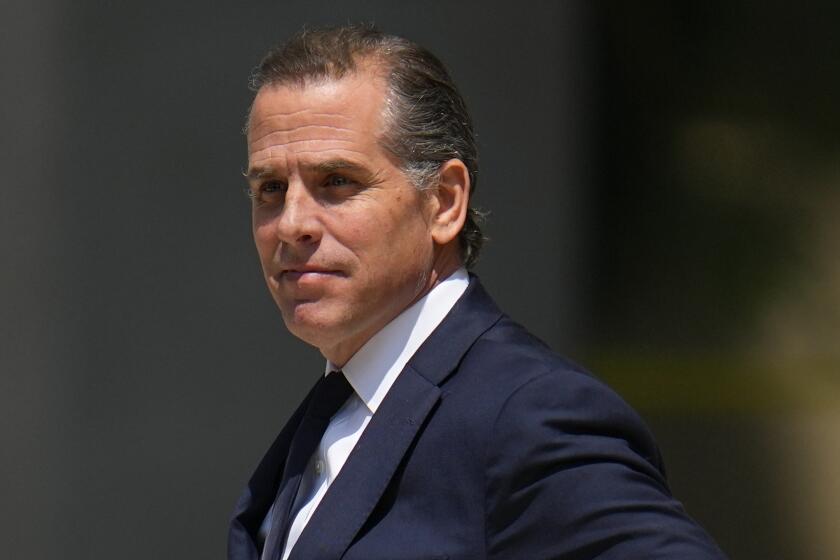Nuclear recreation
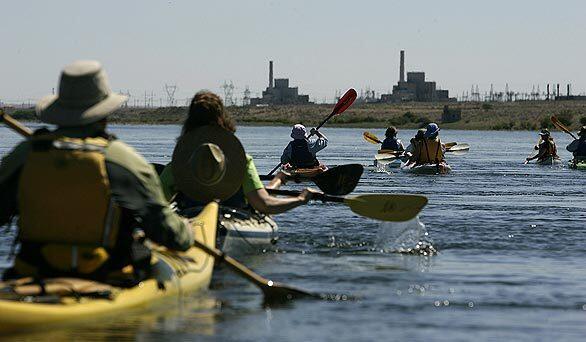
Kayakers on a Columbia River tour take in the view of the B reactor at the Hanford nuclear site just north of Richland in southeast Washington state. The “B” plant produced the world’s first weapons-grade plutonium for the nuclear bomb dropped on Nagasaki, Japan, in World War II. In 2000, then-President Clinton proclaimed 195,000 acres along the river and around the nuclear site a national monument. (Spencer Weiner / Los Angeles Times)
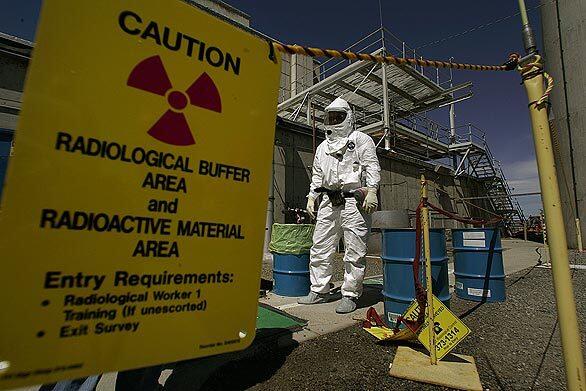
A worker at the Hanford nuclear site in Washington state.
(Spencer Weiner / Los Angeles Times)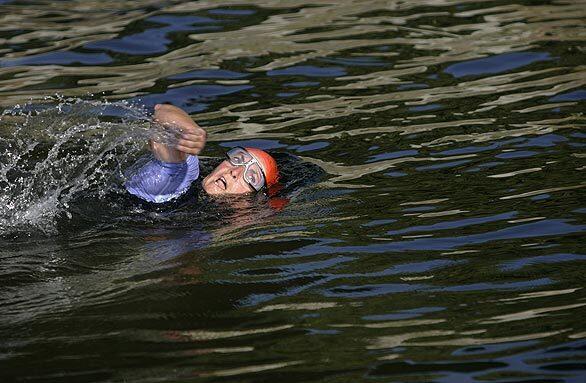
Swimming in the Columbia River along Howard Amon Park in Richland, Wash., Diane Spangler trains for a triathlon in an area that has been described as home of the United States’ biggest radiation cleanup project. Tourism in the area has been growing in recent years. (Spencer Weiner / Los Angeles Times)
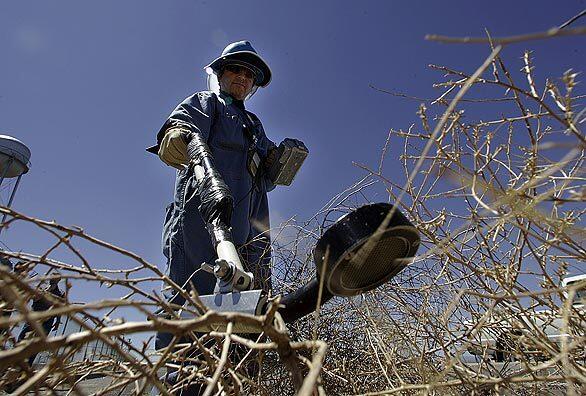
Phil Garcia uses a Geiger counter on the local vegetation. Even the tumbeweeds that blow across the cleanup site are scanned for radiation before they are carted away for disposal. (Spencer Weiner / Los Angeles Times)
Advertisement
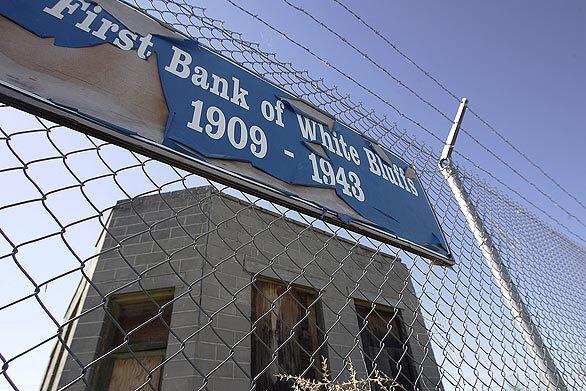
Several towns in the Hanford Reach area in southeast Washington were condemned and evacuated by the U.S. government in World War II to make way for the nuclear facilities. A few buildings, like this bank built in 1909, are protected with a fence on the site. (Spencer Weiner / Los Angeles Times)
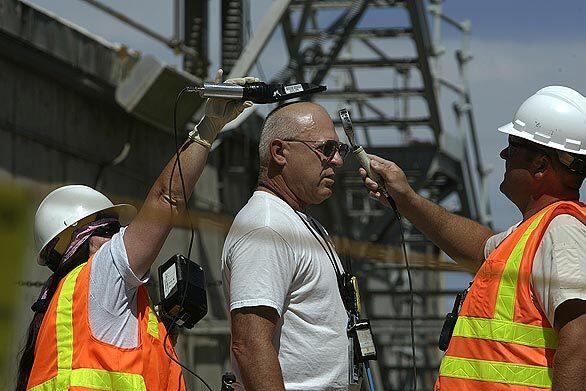
Cleanup workers check a crew member for radiation after a day spent dismantling the K reactor complex at the Hanford site. (Spencer Weiner / Los Angeles Times)
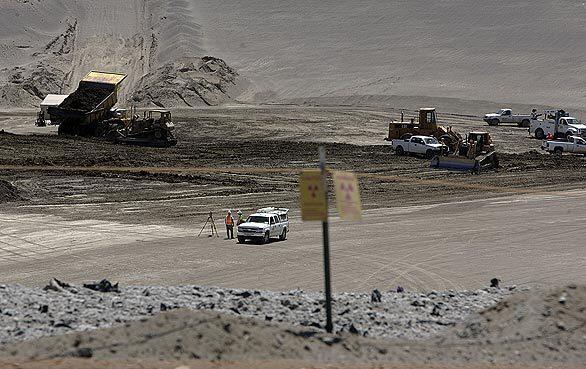
A cleanup contractor fills a massive onsite landfill with leftover contaminants from the Hanford nuclear site. The task has been daunting, involving the removal of millions of gallons of contaminated groundwater, hundreds of tanks of liquid radioactive waste and thousands of tons of spent nuclear fuel. (Spencer Weiner / Los Angeles Times)
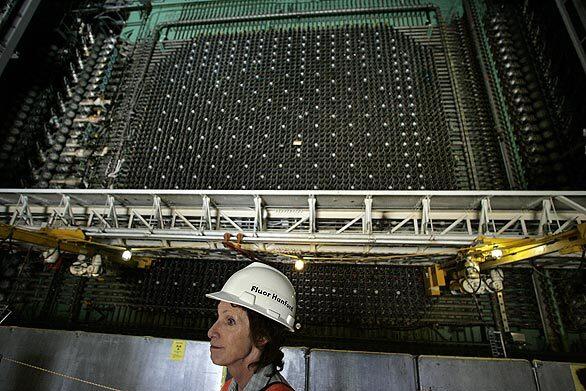
Hanford historian Michele Gerber stands in front of a five-story loading chamber, a nuclear reactor’s huge front face, with tubes for 2,004 fuel rods, at one of several nuclear reactors on the Hanford site. Between 1943 and 1963, nine reactors were built here. (Spencer Weiner / Los Angeles Times)
Advertisement
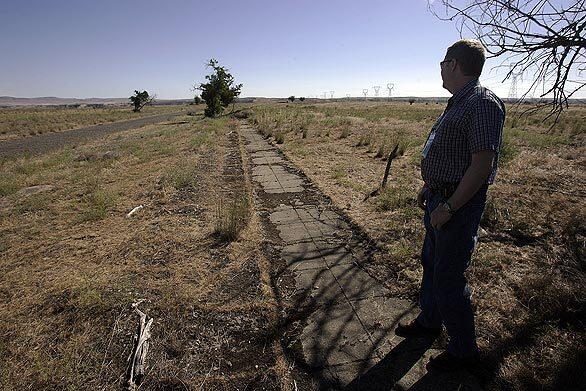
After several towns were condemned and evacuated for the World War II nuclear project, only a few structures remained and are now protected. Department of Energey spokesman Geoffrey Tyree looks at an abandoned sidewalk built about 1909. (Spencer Weiner / Los Angeles Times)





